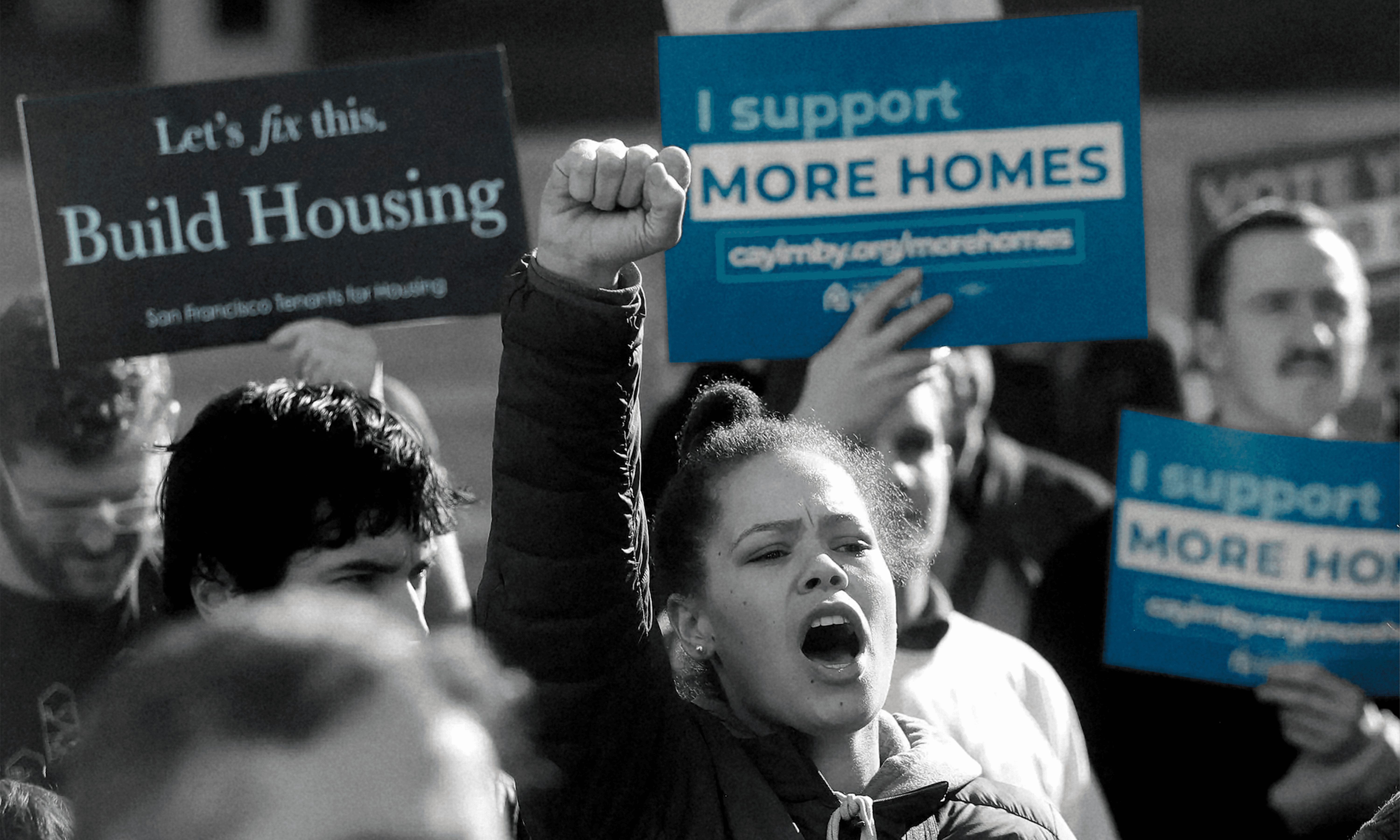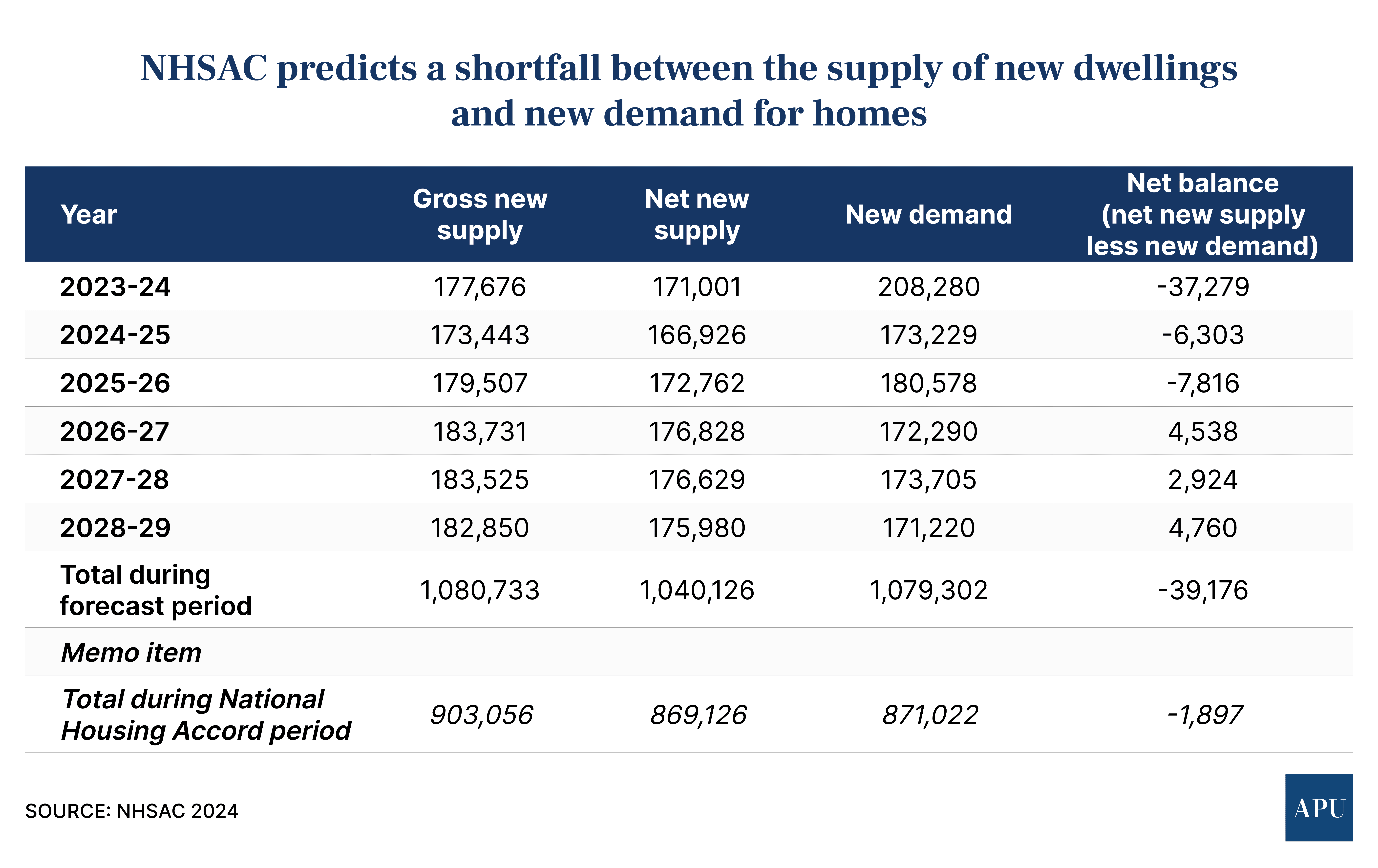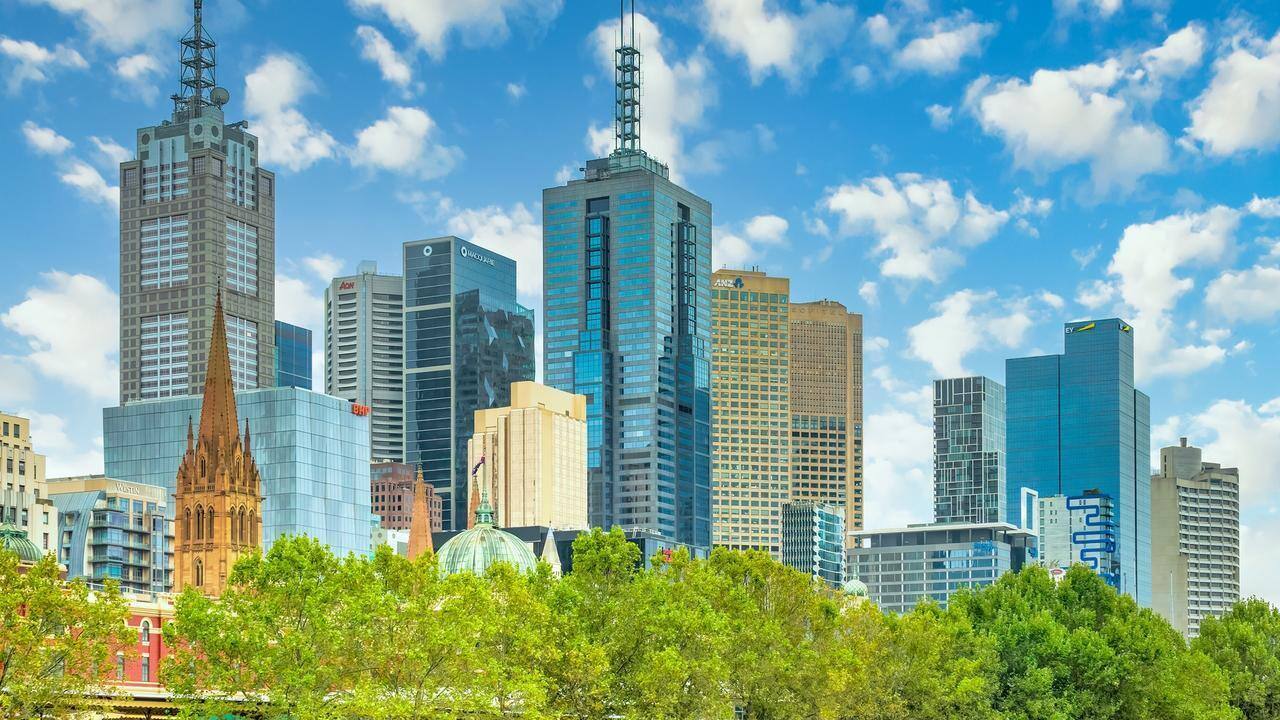Features > Property News & Insights > Housing Trends
Housing shortage to continue at least six years

Image from Jeff Chiu/AP Photo
KEY POINTS
- The Federal government’s National Housing Supply and Affordability Council has forecast a chronic housing shortfall through to at least 2029
- The Council’s first State of the Housing System 2024 report says home price “affordability is likely to worsen in the near term” while rents will continue to rise at a rate above inflation
- The State of the Housing System 2024 report also says the federal and state governments will fall more than 250,000 homes short of their target of building 1.2 million homes over the next five years.
A major report to the Federal government has confirmed there will be a shortage of housing in Australia for at least the next six years.
Forecasting a continuing chronic imbalance between supply and demand, the State of the Housing System 2024 report also offers no evidence that home prices will fall or rent prices will ease.
The report also predicts the government will fall short in its quest to build 1.2 million new homes in Australia over the next five years.
The background
Late last year, Prime Minister Anthony Albanese announced the establishment of a National Housing Supply and Affordability Council (NHSAC) to provide expert advice on housing to the federal government.
To head it, he hand-picked leading business figure Susan Lloyd-Hurwitz - a former head of property group Mirvac.
Six months later, the Council has released its first report.
The report is a long one, and is short on solutions, but does very clearly establish the problem: there is not enough housing in Australia for our population.
Finance commentator and author Alan Kohler describes it as “a dismal report full of dismal graphs and numbers”.
The key finding
The State of the Housing System 2024 report’s key finding is buried on page 87.

“Over the Council’s full 6-year projection horizon, net new market housing supply is expected to total 1,040,000 dwellings,” it says.
“New demand is expected to total 1,079,000 households.”
“This represents a deficit of new market supply relative to new demand of around 39,000 dwellings over the 6-year period,” the report says.
But as Ms Lloyd-Hurwitz pointed out at a press conference to launch her Council’s report, this figure is NEW demand versus NEW supply.
“Of course that does not go to address the undersupply that's already in the system," she said.
As a result, the State of the Housing System report says, “affordability is likely to worsen in the near term”.
In other words, home prices and rents will continue to rise.
“For those looking to acquire their first home or upgrade to a more expensive dwelling, the cost of doing so will remain high,” the report says.
“For tenants, rental costs will continue to exceed rises in the broader cost of living.”
“Rental housing will remain scarce, with the vacancy rate projected to remain below that consistent with a stable rental market.”

The National Housing Supply and Affordability Council predicts that while rental vacancy rates will ease from their current extreme lows, by 2029, rental vacancy rates across Australia will still be below 2.5%.
A vacancy rate of 3% is generally accepted as indicating a “healthy” market with a fair balance between tenants and landlords.
A 3% vacancy rate generally means tenants have a good choice of rental properties to choose from, while landlords are able to get a decent rent on their property.
However, for the foreseeable future, the playing field will be heavily tilted in favour of landlords.
The National Housing Accord
While the Council’s projections are over a six-year time frame, it also did a separate calculation to fit in with the National Housing Accord target.
That was the deal agreed between the Commonwealth and the states last year, which would aim to see 1.2 million houses built in 5 years, starting on the 1st of July this year.
The Council says its projections “indicate the gross new market housing supply will total 903,000 dwellings during the National Housing Accord period, with a further 40,000 social and affordable dwellings funded by Commonwealth initiatives.”
In other words, 257,000 homes short of the target.
The challenge
Master Builders Australia says the State of the Housing System 2024 report highlights many of the challenges the building industry faces.
“Low productivity from labour shortages, materials, and poor planning/regulation all drive up building costs and impact housing supply,” says the group’s CEO Denita Wawn.
Ms Wawn goes on to make the disturbing claim that “80% of the additional new homes that could have been built will never see a shovel hit the ground,” largely because of issues surrounding costs, red tape, financing and labour shortages.
Ms Lloyd-Hurwitz says that even if planning bottlenecks are cleared, and construction costs fall, "We still wouldn't have enough construction capacity given the number of people in the sector, the very low productivity, the lack of innovation."
“There is no denying the housing crisis we are in,” she says.
“It is a longstanding crisis, fundamentally driven by the failure to deliver enough housing of all types—from social housing through to market home ownership.”
And as long as that crisis continues, it’s fairly obvious that will mean higher home prices and larger rents.
Stay Up to Date
with the Latest Australian Property News, Insights & Education.




.png?width=292&height=292&name=Copy%20Link%20(1).png)
 SIGN UP FOR FREE NEWSLETTER
SIGN UP FOR FREE NEWSLETTER








.jpg?width=1920&height=1080&name=Warning%2c%20You%20Might%20Be%20Facing%20Higher%20Taxes%20Soon%20(1).jpg)





.png?width=1920&height=1080&name=Rate%20Drops%20Signal%20BIGGEST%20Property%20Boom%20in%20DECADES%20(1).png)

.jpg?width=1920&height=1080&name=Labor%20vs%20Liberal%20These%20Housing%20Policies%20Could%20Change%20the%20Property%20Market%20Forever%20(1).jpg)
.jpg?width=1920&height=1080&name=QLD%20Slashes%20Stamp%20Duty%20Big%20News%20for%20Investors%20%26%20Home%20Buyers%20(1).jpg)
.jpg?width=1920&height=1080&name=Trump%20Just%20Slapped%20Tariffs%20%E2%80%93%20Here%E2%80%99s%20What%20It%20Means%20for%20Australia%20(1).jpg)
.jpg?width=1920&height=1080&name=Federal%20Budget%202025%20More%20Debt%2c%20No%20Housing%20%E2%80%93%20Here%E2%80%99s%20What%20You%20Need%20to%20Know%20(1).jpg)
.jpg?width=1920&height=1080&name=Australias%20Housing%20Crisis%20is%20about%20to%20get%20MUCH%20Worse%20(New%20Data%20Warns).jpg)
%20(1).jpg?width=1920&height=1080&name=Australias%20RENTAL%20CRISIS%20Hits%20ROCK%20BOTTOM!%20(2025%20Update)%20(1).jpg)
%20(1).png?width=1920&height=1080&name=Is%20Adelaide%20Still%20a%20Good%20Property%20Investment%20(2025%20UPDATE)%20(1).png)
.jpg?width=1920&height=1080&name=RBA%20Shocks%20with%20Rate%20Cuts!%20What%E2%80%99s%20Next%20for%20Property%20Investors%20(1).jpg)
%20(1).jpg?width=1920&height=1080&name=I%20Predict%20The%20Feb%20Rate%20Cut%20(My%20Price%20Growth%20Prediction)%20(1).jpg)
.png?width=1920&height=1080&name=Why%20Property%20Prices%20Will%20Rise%20in%202025%20Market%20Predictions%20(1).png)
.jpg?width=1920&height=1080&name=Why%20Investors%20Are%20Choosing%20Apartments%20Over%20Houses%202%20(1).jpg)
.jpg?width=1920&height=1080&name=Why%20Rate%20Cuts%20Will%20Trigger%20A%20Property%20Boom%20(1).jpg)
.jpg?width=1920&height=1080&name=Retire%20On%202Million%20With%20One%20Property%20(Using%20SMSF).jpg)
.jpg?width=1920&height=1080&name=4%20Reasons%20Why%20You%20Should%20Invest%20in%20Melbourne%20Now%20(1).jpg)
%20(1).jpg?width=1920&height=1080&name=Old%20Property%20vs%20New%20Property%20(Facts%20and%20Figures%20Revealed)%20(1).jpg)
%20(1).jpg?width=1920&height=1080&name=Will%20The%20New%20QLD%20Govt%20Create%20a%20Property%20Boom%20or%20Bust%20(My%20Prediction)%20(1).jpg)
%20Scott%20Kuru%20(1).jpg?width=1920&height=1080&name=Inflation%20Hits%20Three-Year%20Low%20(Will%20RBA%20Cut%20Rates%20Soon)%20Scott%20Kuru%20(1).jpg)
.jpg?width=1920&height=1080&name=How%20to%20Buy%20Investment%20Property%20Through%20SMSF_%20The%20Ultimate%20Guide%20(1).jpg)
.jpg?width=1920&height=1080&name=Victoria%20Slashes%20Stamp%20Duty%20Melbourne%20Set%20to%20Boom%20Scott%20Kuru%20(1).jpg)
.png?width=1571&height=861&name=Are%20Foreign%20Buyers%20Really%20Driving%20Up%20Australian%20Property%20Prices%20(1).png)
.jpg?width=1920&height=1080&name=The%20Single%20Factor%20That%20Predicts%20Property%20Growth%20Regions%20(1).jpg)
%20Scott%20Kuru%20(1).jpg?width=1920&height=1080&name=My%20Prediction%20On%20Rates%20%26%20Negative%20Gearing%20(Market%20Crash)%20Scott%20Kuru%20(1).jpg)

-1.png?width=1920&height=1080&name=Major%20Banks%20Cut%20Rates%20Will%20RBA%20Follow%20Suit%20(Sept%20Rate%20Update)-1.png)
%20Scott%20Kuru-1.png?width=1920&height=1080&name=Rate%20Cut%20Coming%20What%20New%20Zealands%20Move%20Means%20for%20Australia%20(Sept%20Prediction)%20Scott%20Kuru-1.png)
%20(1).jpg?width=1920&height=1080&name=Buy%20when%20the%20interest%20rates%20are%20high!%20(Why%20you%20must%20buy%20now!)%20(1).jpg)
.jpg?width=1920&height=1080&name=Carms_Revised%20Taxes%20Due%20Aug%209%20YT%20Thumbnail02%20(1).jpg)
.jpg?width=1920&height=1080&name=Carms_Too%20Little%20Too%20Late%20Aug%207%20YT%20Thumbnail01%20(1).jpg)









.jpg?width=1920&height=1080&name=Carms_Rate%20Drop%20In%20July%20Jun%2010%20YT%20Thumbnail02%20(1).jpg)
.jpg?width=1920&height=1080&name=Carms_Own%20a%20Property%20V6%20Jun%205_YT%20Thumbnail%20(1).jpg)









.png?width=1920&height=1080&name=Artboard%201%20(3).png)






.jpg?width=1920&height=1080&name=YT%20thumbnail%20%20(1).jpg)

